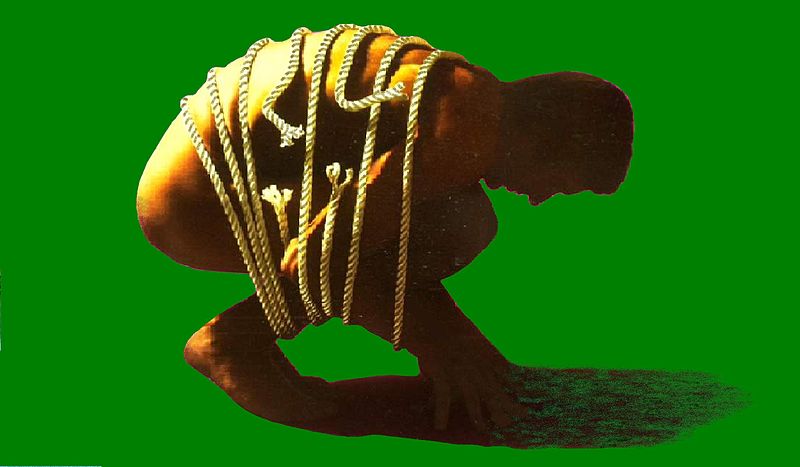A new study in the journal Pain has found that experiencing moderate to severe pain or having at least moderate life interference from pain makes a person twice as likely to experience anxiety or depression three years later.
“A better understanding of the prospective contribution of pain in mental disorders might be instrumental in identifying better strategies for prevention and early interventions of mental disorders, particularly because pain is modifiable,” the researchers write.

The research was led by Eric W. de Heer at the Centre of Excellence for Body, Mind, and Health in Tilburg, the Netherlands. It used data from the Netherlands Mental Health Survey and Incidence Study-2 (NEMESIS-2). The survey was conducted in the Dutch general population, with initial interviews between 2007-2009, and 3-year follow up interviews between 2010-2012. In total, 5,303 people were interviewed at both time points.
The researchers found that moderate to severe pain, as well as moderate to severe interference due to pain, at baseline, were both associated with a 200% increased likelihood of anxiety and depression at the 3-year follow-up.
Of the participants, 15.1% experienced moderate to severe pain, and 8.3% reported moderate to severe impacts of pain on daily functioning. According to the researchers, female gender, lower education level, unemployment, and mood, anxiety, and substance use disorders were all associated with higher pain levels and impact of pain.
In the study, 304 people developed a mood disorder, 179 developed an anxiety disorder, and 160 developed a substance use disorder. Pain, and interference due to pain, both increased likelihood of mood and anxiety disorders by approximately 200%. Pain was not statistically linked to the development of a substance use disorder.
The findings of this study coincide with findings on specific populations, such as clinical settings. Pain has been shown to be associated with the presence of mood and anxiety disorder diagnosis in these settings, and longitudinal studies have correlated pain with later worsening of mental and emotional health. Additional studies in the elderly also found increased depression and anxiety after experiences of pain.
The current study built on this research by expanding the sample to include a representation of the general population (instead of focusing on clinical populations or the elderly). Additionally, the researchers used validated measures for determining anxiety, depression, and substance use (Composite International Diagnostic Interview, CIDI), and pain severity and impact (Short Form Health Survey, SF-36). Finally, they used a large sample and followed them over three years.
The researchers also separated their analysis into people who experienced a first episode of depression and anxiety, and people who had a recurrent bout of previous anxiety or depression. This breakdown did not alter their results. That is, even people who never had before experienced anxiety or depression were twice as likely to experience it after having moderate to severe pain (or being moderately to severely impacted by pain). Adjusting for other mental health concerns at baseline also had little effect on the results.
Interestingly, the authors found that risk of substance use disorder was not increased by experiencing pain. This was contradictory to other findings, such as an at-risk sample that saw a 2-3 fold increase in substance use disorder after pain. The researchers suggest that their sample was the general population, and may, therefore, be different from at-risk samples. Additionally, their study was conducted in the Netherlands so results might differ between countries.
“Pain management programs could […] serve as a preventative program for mental disorders in subjects with pain; reducing pain symptoms might lead to a reduced risk of developing a mental disorder,” the researchers conclude. “However, more longitudinally research studies are needed exploring causality and other mediating factors in the association between pain and mental disorders.”
****
de Heer, E. W., ten Have, M., van Marwijk, H. W. J., Dekker, J., de Graaf, R., Beekman, A. T. F., & van der Feltz-Cornelis, C. M. (2018). Pain as a risk factor for common mental disorders: Results from the Netherlands Mental Health Survey and Incidence Study-2: A longitudinal, population-based study. Pain, 159(4), 712-718. (Link)















Big question: if all these people who had experiences with pain were previously on pain drugs, THEN what role did the the pain drugs have in the later onset of anxiety and depression???
Richard
Report comment
So true, Richard. Today’s doctors and “mental health professionals” don’t even know that opioids are dangerous, addictive, mind altering drugs. They think the opioids are “safe pain meds,” whose adverse mind altering effects are the serious DSM disorders. I’ve got proof of this in my medical records.
Report comment
I think this is a valid comment, however, it worries me that people with chronic pain might find themselves untreated.
Report comment
So we’ve done research showing that chronic pain makes you feel bad. Wow. What a startling conclusion. I never would have guessed!
Report comment
“Anxiety” and “depression” used to be called things like fear, sadness and frustration; in other words basic human emotions in a corporate world where only “happiness” among the proles is considered acceptable.
Gotta go — about this time three years ago I pulled a cabinet down on top of my head, and damn did those staples hurt! — I expect the anxiety and depression to kick in any time now…
Report comment